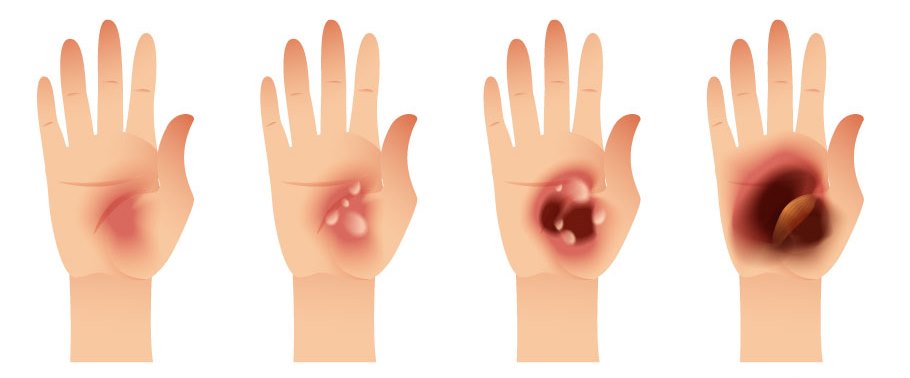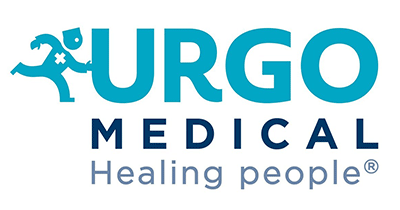
Contact with hot drinks, food, fats and cooking oils was the most common cause of thermal injuries however explosions, chemical burns, contact with fire, smoke or flames and exposure to light and radiations can also cause burns. All burns require immediate first aid treatment. Burns can lead to functional, aesthetic and psychological effects. If there is significant skin loss there is risk of infection.
What is a burn?
A burn is a skin lesion which sometimes affects underlying tissue. There are four types:
- Thermal – occurs due to contact with a solid (eg embers, hot iron, oven), liquid (boiling water/oil/burning hydrocarbon), or an explosion. Biting cold can also cause burns.
- Chemical – caused by a caustic product (eg. acid)
- Electrical – caused by contact with an electric current or arc.
- Radiation – caused by solar UV radiation, XRay or nuclear radiation.
Types of burns
The severity of a skin3 depends on three main criteria: depth of burn, extent over the body and location on the body.
How is the depth of a burn evaluated?
There are three levels of burns:4
- Superficial – these burns cause damage to the first or top layer of skin only. The burn site will be red and painful.
- Partial thickness – these burns cause damage to the first and second skin layers. The burn site will be red, peeling, blistered and swelling with clear or yellow-coloured fluid leaking from the skin. The burn site is very painful.
- Full thickness – involves damage to both the first and second skin layers, plus the underlying tissue. The burn site generally appears black or charred with white exposed fatty tissue. Very deep burns may damage the underlying muscle or bone. The nerve endings are generally destroyed and so there is little or no pain at the site of the full-thickness burn. However, surrounding partial thickness burns will be very painful.

It can be difficult to tell the difference between partial and full-thickness burns. The depth of a burn is not critical in the initial treatment of burns. An assessment of the extent of the burn is more important initially.
How is the extent of a burn evaluated?
The extent of burn is estimated as a percentage of total body surface area.
Location
Burns to some areas such as the face, hands, feet and perineum are taken particularly seriously.
Other factors to be considered include the person’s age (children under 5 or adults over 60) and coexisting chronic diseases (eg heart failure, respiratory failure, diabetes).
First Aid for burns
Remove the person from danger and further injury. Hold the burn under cold running water for 20 minutes. If necessary, prevent heat loss by covering unburnt areas.
Burnt clothing should only be removed if it does not stick to the burn. Do not remove clothing that is stuck to the burn as this carried a risk of skin detachment. Any chemicals, such as acids and alkalis, must be washed off with running water for at least 20 minutes. A cool shower is ideal.
Superficial burns required pain relief, dressings and regular review to make sure they don’t become infected.
A major burn is defined as a burn of any depth that involves more than 20% of the total body surface area for an adult (and more than 10% of total body surface area for a child).
Major burns are a medical emergency and require urgent treatment. Immediately apply cold water to all affected areas and then cal triple zero (000) for an ambulance. A cool or lukewarm shower is ideal.
Partial thickness burns will require a non adherent dressing to promote healing and reduce the risk of infection. If the body is not able to heal the injury by itself, skin grafts may be needed.

